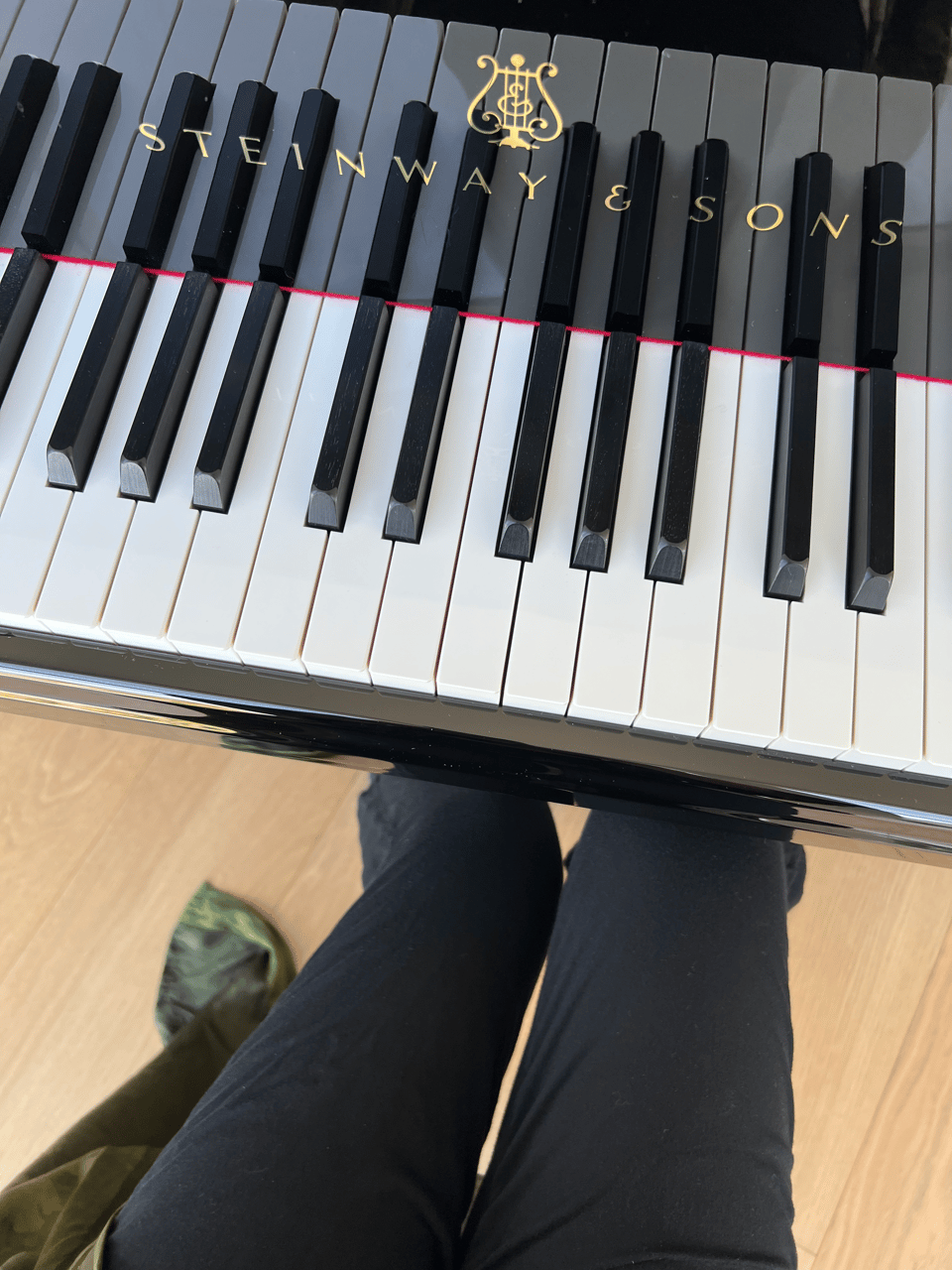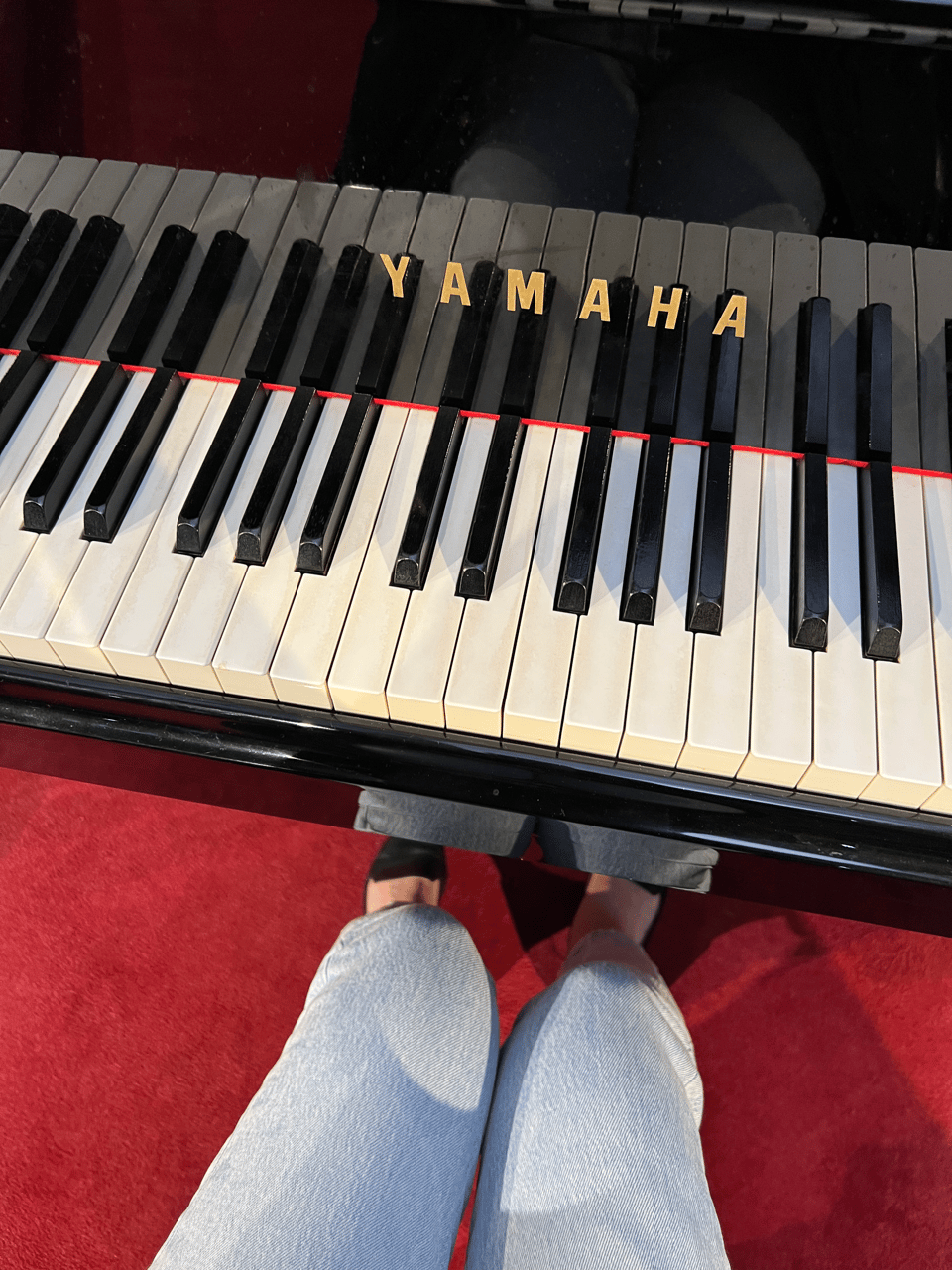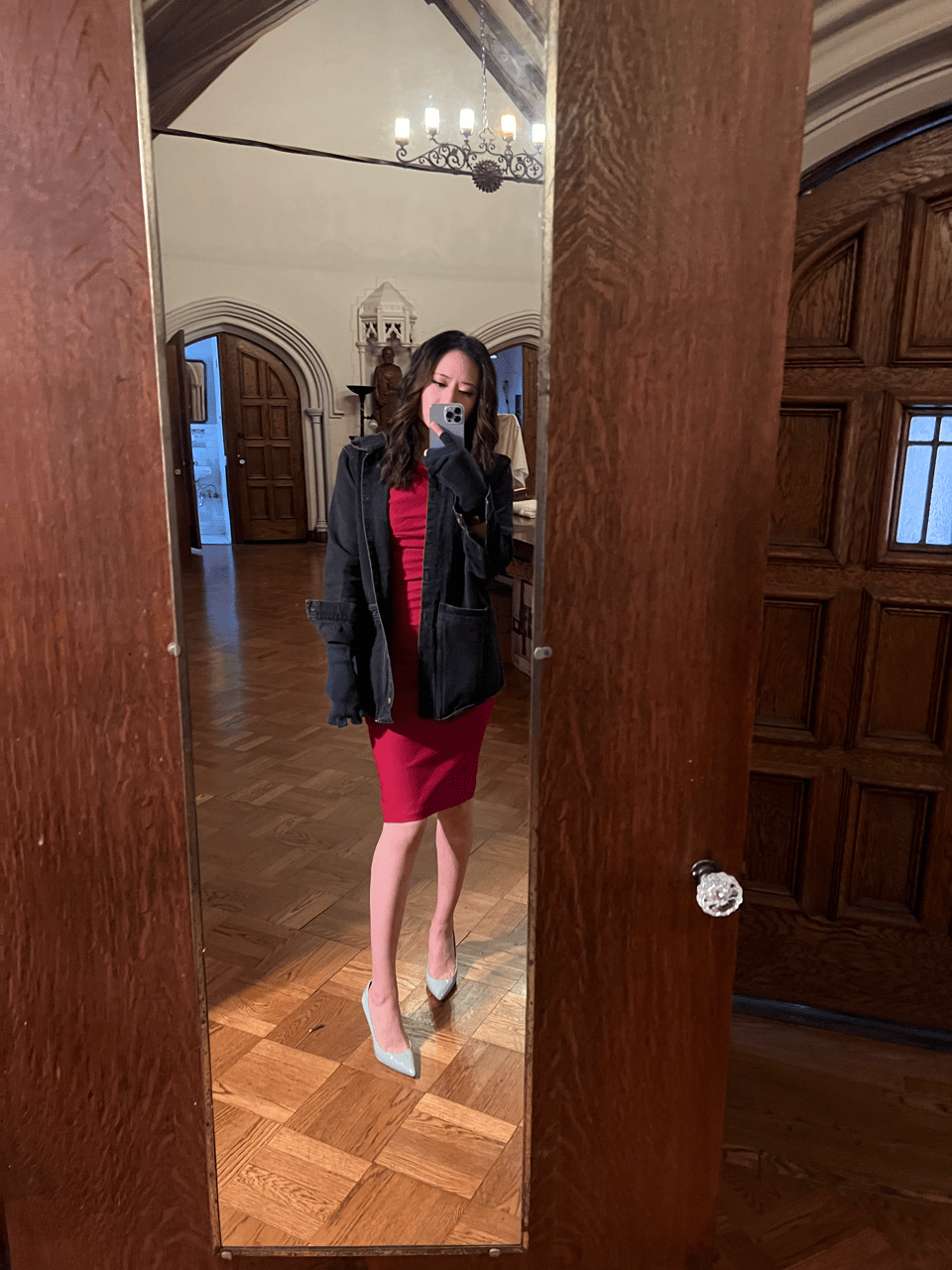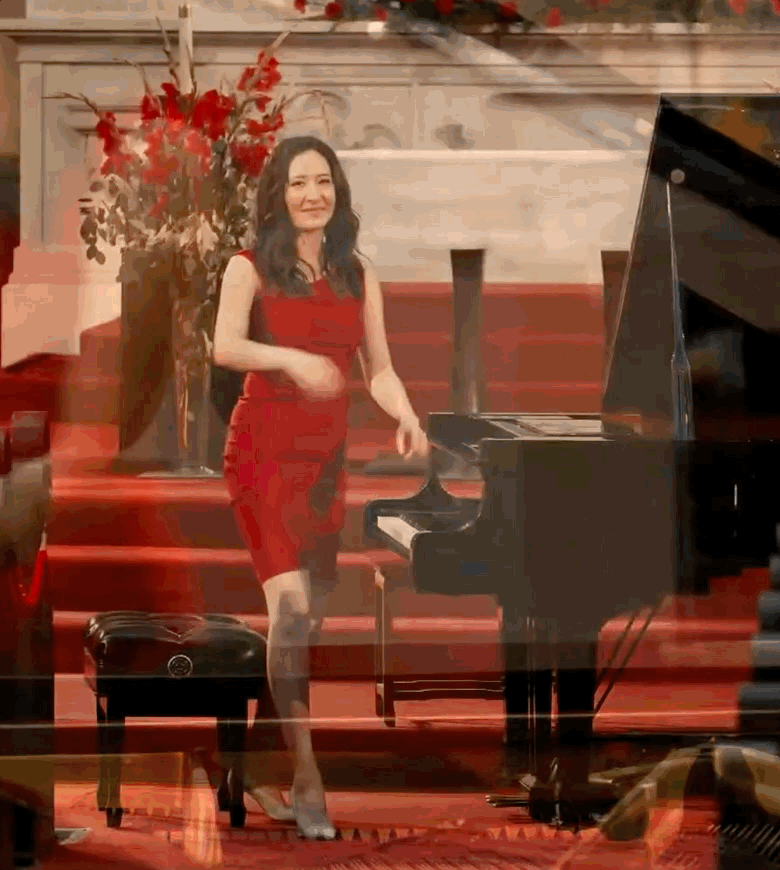In which I review some pianos
Plus a concert recording
I am aware that nowadays Facebook is a place for alienating relatives, sharing dubious medical research, and destroying what’s left of democratic institutions, but in my senior year of high school, Facebook was a lawless young people’s playground. It didn’t seem like there was anyone over the age of 30 on that site, and our “walls” were the digital equivalent of graffitied in-jokes and chronicles of shenanigans we didn’t want our parents or teachers to see. You could post anything, it seemed, and there would be no consequences because the adults had no idea.
So what did I do on Facebook with my unfettered online freedom? I reviewed pianos, of course.
In my last semester of high school, I auditioned at too many music schools to count, and at the end of it all, as I waited to see which schools would deign to take me, I decided to write a recap of every piano on which I’d banged out my audition rep. I did this because I didn’t know what else to do with a steel trap mind that could recall the make and condition and idiosyncrasies of each one of the several dozen pianos I’d touched, and as a teenager I possessed endless energy and an inability to manage my time wisely. Then, as now, I had the compulsive need to write out everything that popped into my head regardless of whether or not other people were actually interested.
So one night, instead of studying, I started a Facebook Note and wrote: about the battered brown uprights I warmed up on in practice rooms, about the intimidating grand pianos I played in auditions for faculty seated at long folding tables. From memory I recounted which pianos were shrill and twangy with keys that stuck and which ones were hard to bend to my will, with stiff pedals and heavy actions, and which ones were surprisingly friendly, as if they wanted me to do well. I even wrote about the digital pianos at various Costcos that I showed off on while my mom gassed up the car and bought reasonably priced meals (chicken bakes 4ever) for us to eat between check-ins and audition windows.
(Before you ask: no, I don’t have this note anymore; by the time I deleted my Facebook in 2017, nothing I’d posted to the site seemed worth saving.)
I think about that dorky, demented piano recap whenever I travel between a bunch of pianos in quick succession. Unlike my high school self, I’m always tired now and I barely have time to keep my own life together, much less write a review of every piano I encounter, but you know what? I befriended a bunch of pianos in June and I want to write about them. High school Sharon and the memory of what Facebook used to be, this is for you.
1. Test run: Yamaha grand
If you’re in music school and you have a performance coming up, there is no shortage of opportunities to do test runs. Once you’re a Real Adult loose in the world, though, good luck. In the weeks leading up to my Bay Area performances I racked up mock performances at home with various audiences—my husband, a friend, a pile of judgmental-faced stuffed animals—but needed to ratchet the pressure up a notch.
A lovely friend runs an award-winning restaurant with a gallery room that doubles as a music venue, and when I texted her with some apologetic trepidation asking if I could run through my program in her space, she warmly invited me to play any time I wanted. So I showed up around lunchtime one day with my heels in my bag and ran through my program for a bunch of surprised diners.

The piano had the easygoing nature of a host who doesn’t know you but wants you to have a good time anyway; the keys yielded amiably to my touch and didn’t fight me on more demanding runs. It was a touch out of tune (a feature for me, not a bug; it helps to practice adapting to unfamiliar tuning) and liked going big more than it liked being soft—I appreciated that I didn’t have to push too hard in big moments but found myself choking a bit trying to do softer gestural sweeps. The space was far more echoey than my own acoustic-paneled living room, which reminded me to think bigger and not sweat the small notes.
Test runs aren’t just for, as I put it, “seeing what breaks” when you play through a program outside of the safe confines of your practice space. They’re also for practicing your game face afterwards, when you feel fragile and silly and you’re mentally cataloguing all the cracks you found in your own playing, but people are telling you that you’re so good and so talented and you feel like your feet are planted on either side of a gaping chasm separating two separate realities.
2. Practice: Steinway Model D
Usually the piano you practice on before a concert is significantly inferior to the one at the venue; it’s often a battered practice piano that has Really Seen Some Shit or a digital keyboard (the latter is often a better option than the former). By the time you get to the stage, even the most indifferently maintained piano is an upgrade.
I found myself in the utterly absurd situation where the reverse was true; for a few glorious days, I had the full run of a Steinway concert grand to practice on before my concerts. Just as my cat is so spoiled that she lives [Parker Posey voice] better than the old kings and queens, I was living better than the A-listers—how many of even the big-name concert pianists get to practice on the road on instruments better than what’s in some concert halls?

One of the first things I did upon arriving at a friend’s generously proffered apartment—well, first thing after changing into sweatpants—was sit down and acquaint myself with the Steinway, which was a delight. The action was wonderfully responsive and as I tried out more involved passages, I was struck by how the piano had a way of springing energy right back to me. On so many pianos, you just give and give and give, trying to get that particular sound, and it feels like the instrument is just sucking the life force out of you. This one gave back, carrying me through the most muscled passages with the playfulness of a dolphin, and letting me change directions on a dime.
It made me think that it’s really quite unfair that all the big-name pianists get to perform on finely maintained concert grands all the time while us little fish are out here fighting for our lives on instruments that are way harder to play. Do you know how great I’d sound if I got to perform on pianos this good on a regular basis?
3. Concert: Yamaha grand
I’ve played on some real stinkers at venues, and cathedral acoustics can be all over the place, so I braced myself for the worst when I arrived for sound check the morning of my San Francisco concert.
“It’s a Yamaha, but doesn’t sound like it,” the house manager said as he ushered me to the piano.

This will do, I thought with relief after trying a few bars. The sanctuary of the cathedral wasn’t as echoey as I’d feared, and the piano itself was like an old but dependable lesson horse, willing to do what I asked. The keys were neither leaden nor loose, and if the Yamaha didn’t have that low tone of a lover’s whisper that some pianos give you, it at least had a respectable quiet range. (Some pianos absolutely refuse to go below a mezzo-forte, forcing you to toss all your exquisitely shaped intimacies out the window.)
The una corda pedal produced an actual color change, the sostenuto pedal worked and didn’t create any funny business—I couldn’t ask for more, so I ran through my entire program while the tech crew fussed around me, fiddling with microphones and cameras and, at one point, frantically running around trying to figure out which reflective surface was causing an on-camera glare on my face.
The real challenge in the space wasn’t the piano or the acoustics; it was the cold. Several years of LA living has killed my tolerance for San Francisco chill; despite it being the middle of June, the cathedral itself was absolutely freezing, and I kept my jacket and fingerless gloves on while running through my program during sound check.
It was so cold, in fact, that when I went into my “green room” to wait out the cathedral’s noontime service, I could feel my fingers growing stiff and numb. I have no idea how pianists in actual cold climates survive.

The kind house manager came by and handed me a pair of hand warmers he’d activated, and I clenched my fists around them inside my gloves. For twenty minutes, trying to maintain some baseline level of warmth, I flailed like a dorky preteen at their first dance, waving my fists around, conscious that I was being watched by a carved sculpture of Jesus and hoping that the Son of God wasn’t too offended by any unintentional dancing-related blasphemy.
It was a relief to finally get back to the piano and just play, even if it felt less to me like a concert and more like an episode of Sharon’s Fingers vs. The Cold. The piano did just fine.
4. House Concert: Steinway Model O
(No photo, because I forgot to take one.)
I first got to know this piano when it was new and scary, over a decade ago, when I began giving house concerts in the Bay Area. Back then, it was “hard” to play: the keys had that dignified stiffness that Steinways often have out of the box, and you had to get your touch just right to produce the exact sound you were looking for—all extra challenging given that I was, at the time, being broken down and rebuilt by a teacher putting me through pianists’ boot camp and I was constantly doubting my own ear and ability.
The piano has since settled into itself, and so have I; it’s been a joy every year to come back to it and see how we’ve both changed. Its upper range has gotten mellower and sweeter, the sound is growing rounder, the keys yield more easily to my hands. Each year I find it (and me) capable of more color, while all the mechanisms stay perfectly responsive. It doesn’t hurt, of course, that it’s kept in tip-top shape by its owner, whose love for music and the piano is, if you’ll allow me to be cheesy about it, actually inspiring.
A few years ago a friend from music school attended this house concert and told me afterwards that the soft, intimate sound I got out of the instrument in quiet sections was unbelievable; that compliment, more than any other praise I got that day, has stuck with me, and has reminded me to give just as much love to the soft passages as the big thunderous ones. While I (and my teacher) can claim credit for it, it’s really the instrument and the space that makes those golden moments possible. It’s so rare for the public venues I play to have a piano and acoustics where you can really make those delicate little dewdrop moments shine, and as good as the recording studio is, no recording I’ve made captures that “you’re in the room and I’m talking just to you” feeling.
So this house concert is special. The piano is special. I genuinely think some of my best performances are here.
Many, many thanks are necessary to very many people who brought me to and from these pianos with so much care and kindness and treated me like royalty just because I can play the piano. Thank you to the lovely team at La Puglia. Big, big thank you to E, the consummate host, for putting me up in a beautiful home with a Steinway Model D and every possible amenity to make me comfortable. An absolute enormous thank you to S for hosting me, year after year, taking on the effort of audience wrangling with generosity and grace, and letting me go ham on your precious instrument. Thank you to A for introducing me to the Noontime folks, and thank you to the whole team at Noontime for taking such good care of me (and for the hand warmers).
And thank you to everyone, too numerous to name, who came to see me at either of my Bay Area concerts, some from very far away!
The San Francisco concert was recorded by the lovely folks at Noontime Concerts and put up on Youtube, and you can watch it here if you so choose:
No, I did not intend to match the venue. One of the reasons I usually wear red is so there's no danger of me blending in with the piano or the background; this is the first time in my life I've shown up to find that I'm the same color as the surroundings.
This video is also how I realized that I have a tendency to cross my legs when I bow, and kicked off a spontaneous and silly journey as I tried to figure out when I picked up this particular habit.

While I was in the Bay Area I had the immense pleasure of meeting up with Molly from HenselPushers (and her cat!!!!!), who presented me with a print edition of Fanny Mendelssohn Hensel’s Sonata in G Minor, a piece I’d happily contributed suggested edits to based on my experience learning, performing, and recording the work.
It was an honor just to know there was a better edition of this piece than the one I'd used and that I’d made a small contribution to it, but then I read through the notes and saw this!

That’s me!
Molly also gave me a copy of her arrangement of Fanny’s Das Jahr for easy piano, along with the accompanying lesson book; when I got home and flipped through both books, I was totally floored. The lesson book walks through each individual piece in Das Jahr and explains how to approach both the technical and expressive aspects of the music with thoughtful and easy-to-understand musical explainers, and it's put together with an obvious amount of love and thoughtfulness.
There are a lot of things perpetuating systemic underrepresentation of women composers in music; one of the most fundamental problems that gets less attention is a lack of material for beginners and amateur musicians. I used to teach beginner piano students, and can report that most method books and repertoire anthologies don’t have music by women composers.
There’s also no shortage of easy arrangements of well-known works, which many times is a child’s (or adult amateur’s) first exposure to Vivaldi’s The Four Seasons, Debussy’s Clair de Lune, or the Beethoven sonata movement commonly known as “Moonlight,” but the fact that so few such arrangements of music by women composers exist means that most amateurs will go their entire studies never knowing that music is out there. (People, the canon! is! taught!)
I looked at the HenselPushers lesson book and thought, “Damn, this is what doing the work actually looks like.”
Arrangements like HenselPushers’ make the music of women composers more accessible to beginners, and most importantly, the lesson book makes it easier for teachers—who often refrain from teaching music they don’t know—to incorporate it into their lessons and normalize the idea that people other than men have composed classical music.
It takes a lot of careful, informed work to make this kind of material, and I appreciate it so much, so I’m telling you all about it. Piano teachers, what are you waiting for?
(I was not asked to write any of this; I'm genuinely so impressed and had to tell you all.)
A quick note for my snail mail subscribers
Huge apologies to everyone who is subscribed at the snail mail level; you are my favorite people, even though it may not seem like it because I haven’t sent you any mail since March. Your stuff didn’t get lost in the mail, I’m just extremely behind on a lot of things.
I’m planning on sending out mail about once every two weeks until I’m caught up. Hopefully your partners and/or roommates will understand that you’re not being stalked, you just get a grandfathered benefit from a classical pianist you support via newsletter online. (That’s easy to explain, right?)
How yearly subscriptions work
Once in a while I’ll get an email telling me that someone’s signed up as a premium subscriber for a very generous monthly amount, and after the brief moment of oh-crap-what-benefit-can-I-offer-them-extra-snail-mail-maybe? I realize that it was likely intended as a yearly amount, not monthly, because the Stripe page makes it very unclear.
Just so you know: the problem isn’t you, it’s me. I barely know what I’m doing with Stripe and a more hustle-y newsletter writer would have figured out how to set up all the options, but I know enough myself to accept that I am just never going to bother to figure that stuff out. The good news is that I have at least figured out how to adjust individual subscriptions in settings.
So, if you’re inclined toward optional financial support through this newsletter, but would rather do a once-a-year payment instead of monthly, you can reply to any newsletter I’ve sent and just say “Hi, I want to pay X/year” and I will go into Stripe settings and set that all up for you, because that I know how to do. (And if your once-a-year contribution is above $240, I will ask for your mailing address so that you, too, can get sporadic mail from me.)
Add a comment: